
Minister of State Malcolm Noonan TD: Making space for water
12th September 2024
The economic risk of rising sea levels
7th November 2024With the first phase of Dublin City Transport Plan 2023 having entered into force on 25 August 2024, Rosalind Skillen assesses how these new traffic measures have changed access to the quays with the aim of removing traffic from a core part of the city centre.
The initial phase of the Dublin City Transport Plan is a first step in improving Dublin’s transportation system and reshaping the urban environment to enhance the capital’s accessibility.
What are the new traffic measures?
Two measures will be implemented on the north quays at Bachelors Walk and on the south quays on Burgh Quay and Aston Quay. These measures consist of road marking and signage changes. Private vehicle traffic along the north and south quays will be removed at these locations, leaving space for buses, taxis, cyclists and pedestrians only.
All other routes on the quays and in the city remain the same, including north-south and south-north access to all Liffey bridges and most routes to hospitals and city centre car parks. There will be no changes to disabled bays, loading bays, or taxi ranks. Access for residents will be maintained although there may be a different route to or from the area. The hours of operation will be 07:00 to 19:00, Monday to Sunday.
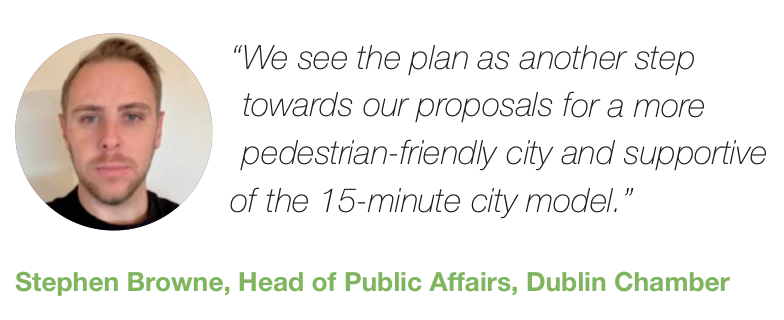
Reacting to the plan, Brian Caulfield, professor in transportation at Trinity College Dublin says: “Dublin city is following what most other European cities are doing at the moment and that is giving more space to public transport and active mobility, like walking and cycling. The city has huge congestion issues, air quality issues, and the best way to fix those issues is to give more space to allow people to move quicker on public transport.”
Emissions
Transport is, by far, the largest sources of energy-related CO2 emissions in Ireland, and the Sustainable Energy Authority of Ireland (SEAI) reported that transport accounted for 40 per cent of energy related CO2 emissions in 2022. By promoting shared modes of transport, these measures will reduce greenhouse gas emissions and improve air quality.
According to the mode share targets for travel in the Dublin City Development Plan 2022-2028, the largest change required is to reduce the number of cars, taxis, and heavy goods vehicles from 29 per cent mode share in 2019 to 17 per cent in 2028.
Rethinking where and when we use the car is a fundamental step in decreasing both congestion and transport emissions. It is welcome, therefore, that these traffic measures prioritise collective modes of transport, like buses, rather than single-occupancy vehicles which are starting to outgrow the city centre.
Cutting traffic congestion
Cutting traffic congestion is one of the main drivers behind the Dublin City Transport Plan. Dublin is the fifth most congested city in Europe and the 12th worst congested city in the world according to the 2022 Global Traffic Scorecard compiled by INRIX Inc.1 Yet most of this traffic is not stopping in the city, but simply travelling through. The plan explains that 60 per cent of general traffic in the city centre is not stopping, working, or shopping.
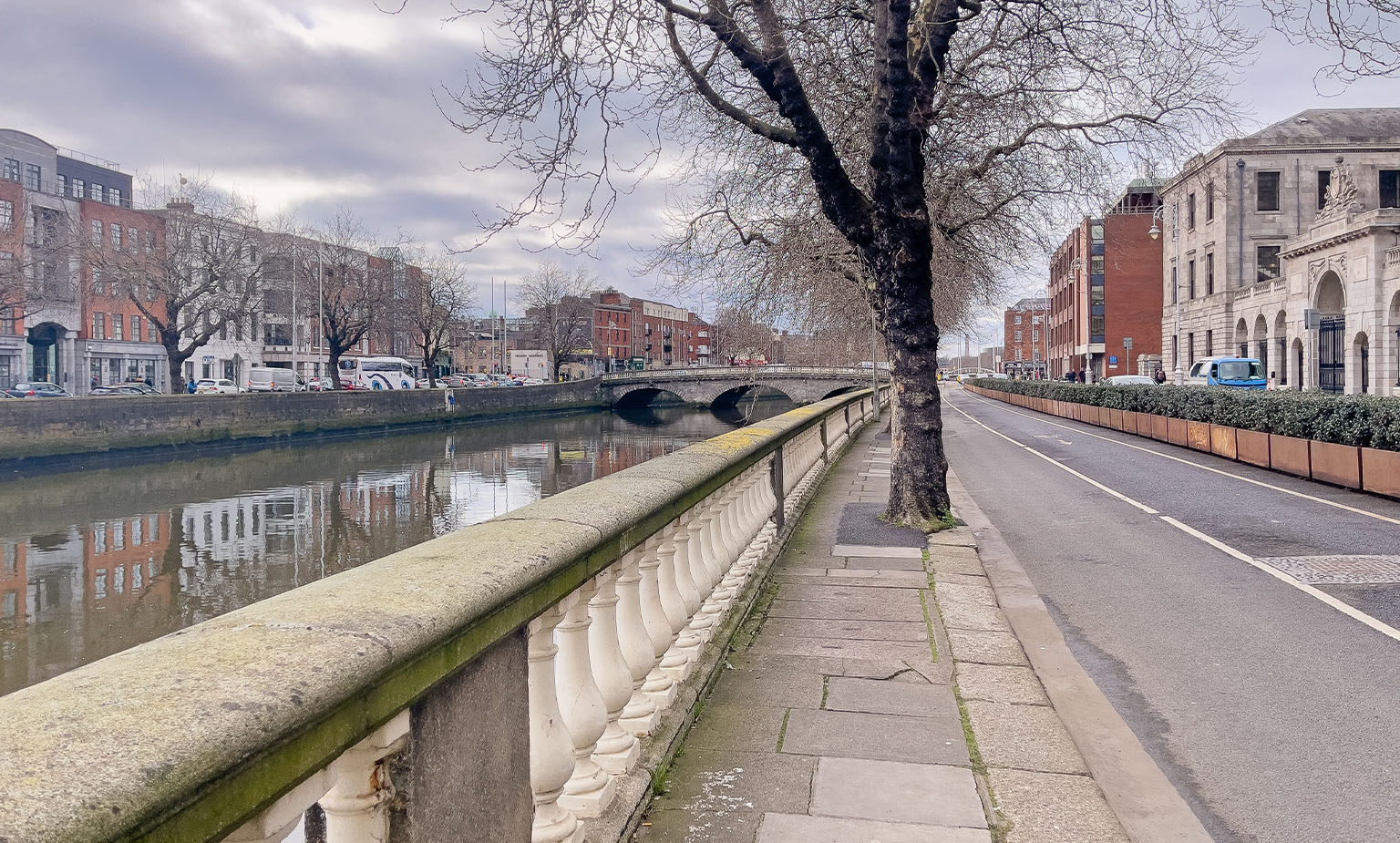
Credit: William Murphy
Whether you are a walker, wheeler, public transport user, or motorist, traffic congestion negatively impacts quality of life metrics at morning and evening rush hours, adding time onto commutes, and delaying many of the 450,000 people who use Dublin Bus every day. In this context, Billy Hann, CEO of Dublin Bus, says the Dublin City Transport Plan “will improve the reliability and consistency of your bus service”.
There is not only an environmental cost to congestion in terms of emissions, but also an economic one. Transport Infrastructure Ireland (TII) has estimated that as of 2023, congestion costs the city centre over €2 billion per annum.
Where some city centre retailers objected to the plan from a commercial perspective, a 2022 survey carried out by the National Transport Authority (NTA) found that car users account for less than one-quarter of retail expenditure in the city. The survey found that expenditure by sustainable transport users equated to over 76 per cent of all retail spend and that 84 per cent of people travelled into Dublin city centre by public transport, walking, or cycling. These findings should reassure research groups that the new measures are not incompatible with promoting economic activity and tourism.
Commenting on the new measures, Lord Mayor of Dublin, James Geoghegan says: “What is really important is that people are aware of the changes that have been made and I hope to explain to people exactly which roads are affected because there has been some confusion in advance of its introduction.
“Separately, to address any issues that inevitably will arise from the changes made by our [Dublin City Council’s] Traffic Department, I am chairing a committee to oversee the changes. This committee includes business organisations, the National Transport Authority, elected officials and other stakeholders, including representatives from the disability community.
“We will host our first meeting in the Wayfinding Centre in Glasnevin, the world’s first transport training centre focused on making public transport more accessible to people with disabilities.”
Stakeholder consultation
Ahead of its implementation, the draft Dublin City Transport Plan 2023 underwent a lengthy and thorough stakeholder engagement process. 3,592 submissions were received as part of the public consultation, and 80 per cent of the responses to the draft plan were categorised as positive. There was also widespread political backing for the plan, with over 80 per cent of Dublin City Council councillors signing a letter of support.
The plan looks at traffic reduction measures through a range of themes, broadening the benefits of low congestion to include social benefits like equality and inclusion. The plan is considered in the context of tourism, retail, and commerce, and Dublin Chamber of Commerce were among actors to support the plan
Stephen Browne, Head of Public Affairs at Dublin Chamber says, “Our support for the Plan has been unwavering, since we submitted our written response to the public consultation back in December 2023.
“Large-scale projects such as those contained in the Dublin City Centre Traffic Plan can provide attractive public spaces where people live and engage in the City in a positive way. These spaces can be used for cultural activities, focal points for tourism and areas where Dubliners can stop and enjoy their city. We see the plan as another step towards our proposals for a more pedestrian-friendly city and supportive of the 15-minute city model. Without it, public transport services across the county of Dublin will be less effective, less frequent and have longer journey times.”
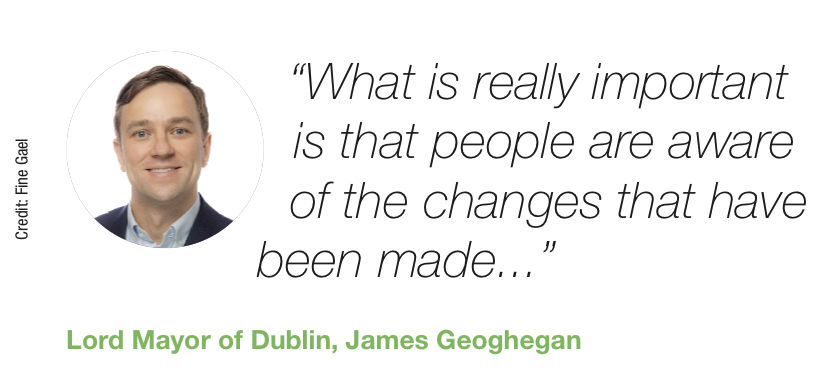
In terms of future stakeholder engagement, the Lord Mayor of Dublin, Fine Gael’s James Geoghegan, will assemble and chair a working group to monitor the impact of changes included in the transport plan. Monitoring air quality will be especially important to capture associated health benefits over years to come. The working group will include a range of voices, including businesses, the NTA, elected members, and members of the disability community.
A first step
Commenting on the plan, environmental researcher, Sadhbh O’Neill, says the plan is “one of the first steps that is testing the political will of the city. Both the elected representatives and the Chief Executive, Richard Shakespeare, were tested”.
“These measures are relatively modest, and they make sense in terms of improving bus services into the city, but there is more to come,” says O’Neill. “Every single little bit of change that they have introduced so far has been so badly needed. It is decades overdue.”
Bearing that in mind, stakeholders should continue to be engaged at every stage of the implementation process to prevent the erosion of public trust. The City Council must continue to reinforce the benefits of the plan while highlighting examples of successful traffic reduction measures. Grafton Street, Caple Street, and Henry Street have all been pedestrianised with no adverse effect on social vibrancy.
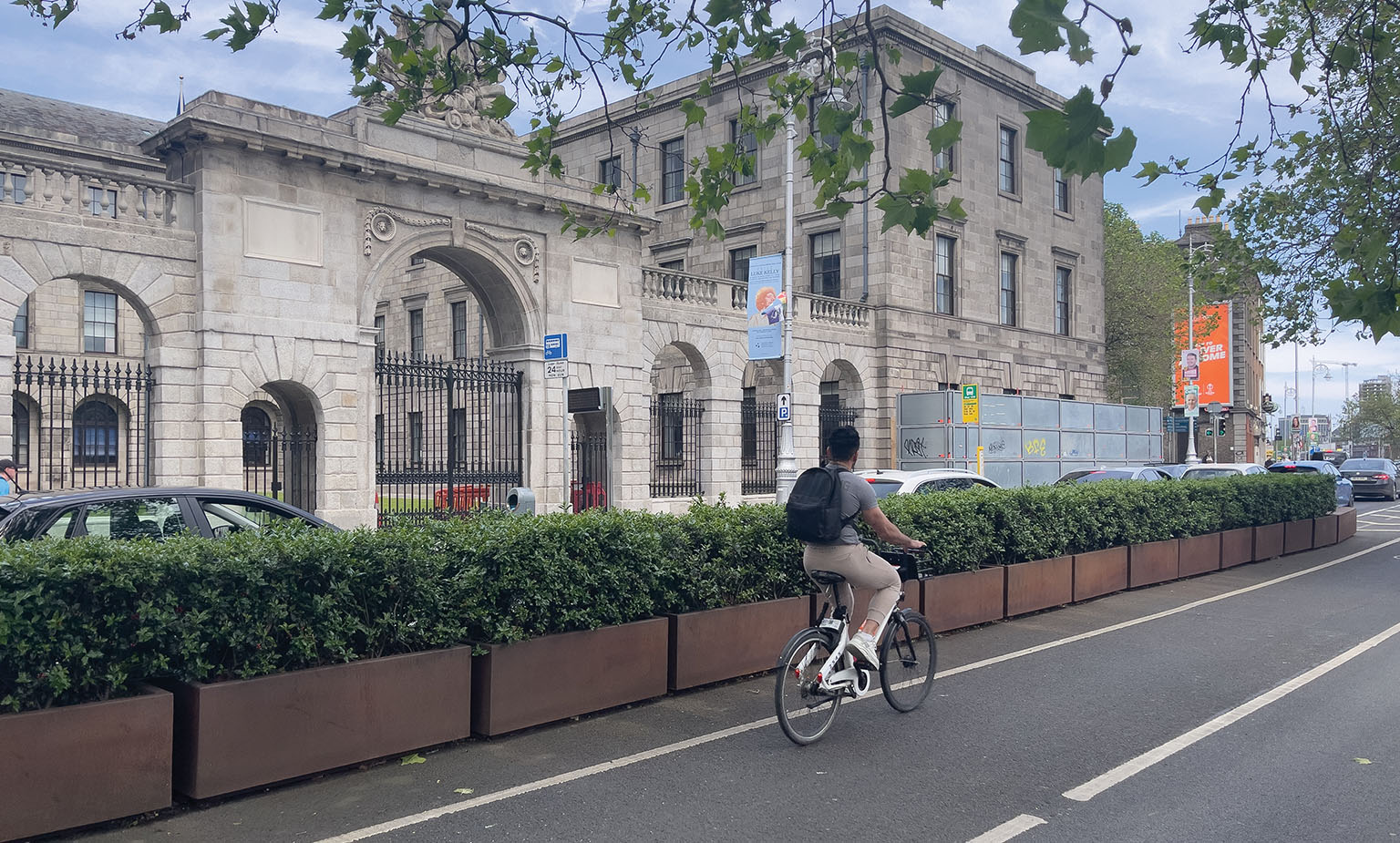
Credit: William Murphy
Analysis
It has taken political courage to push Dublin City Transport Plan over the line. Ireland is caught up in a car-centric way of thinking and there is a misconception that reallocating road space from cars to public transport will only add to woes of drivers. On the contrary, these measures will ease congestion, reduce traffic collisions, and make journey times more reliable.
The plan will improve Dublin’s transportation system, as well as our health, environment, infrastructure and economy. It will take time, but in the long run, these measures benefit everyone.

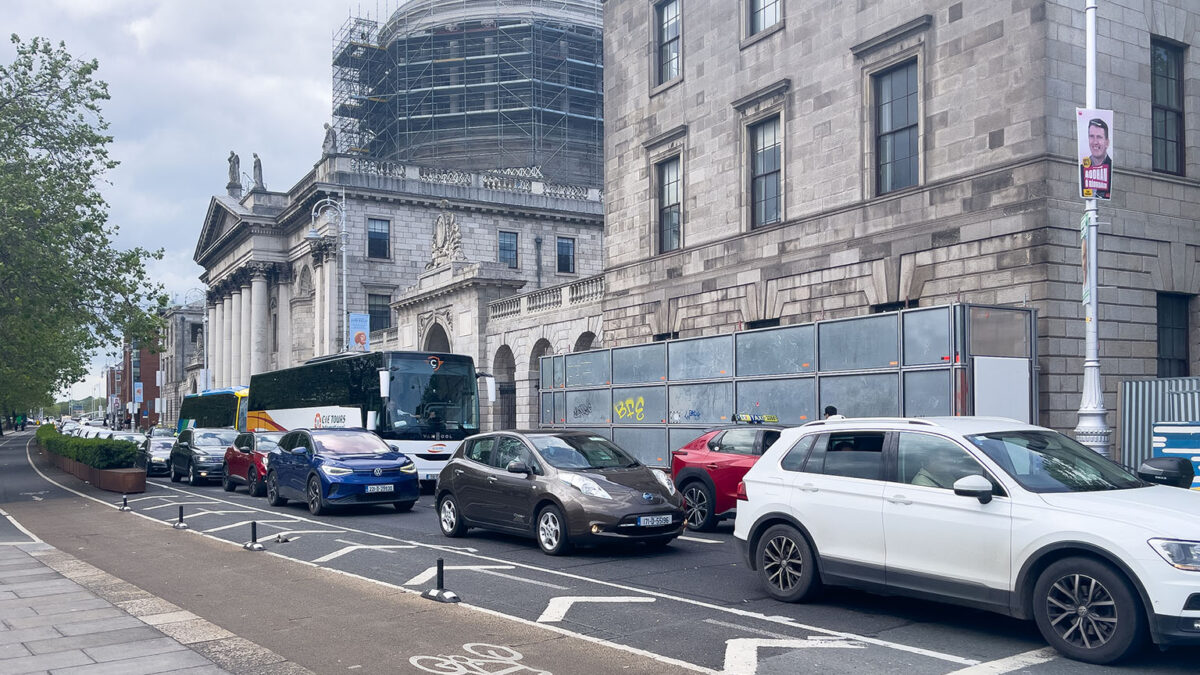


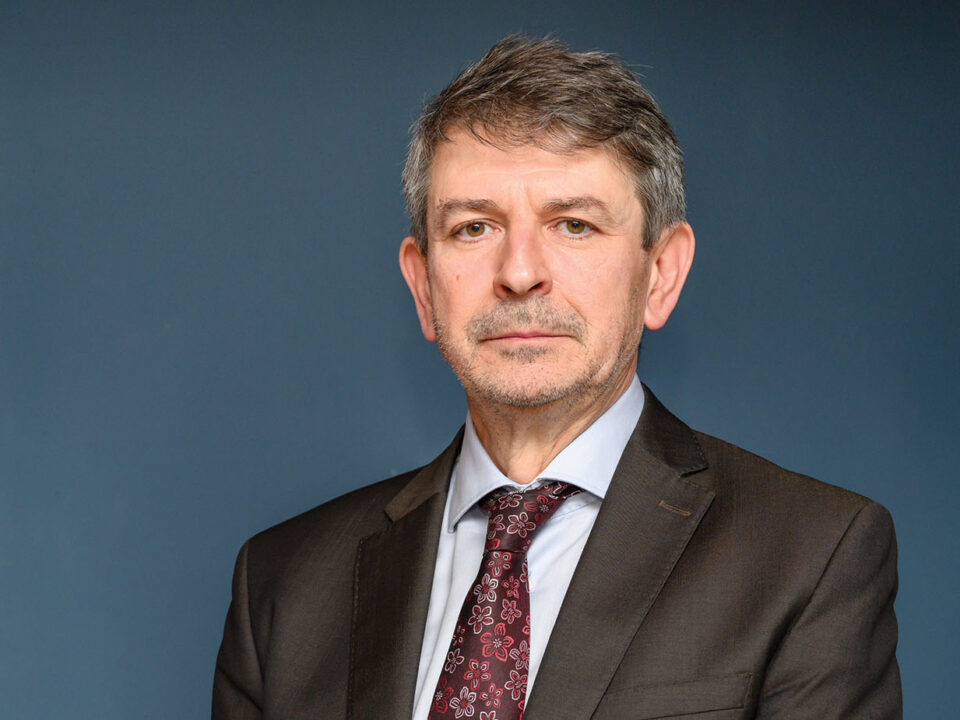
 Ossian Smyth TD
Ossian Smyth TD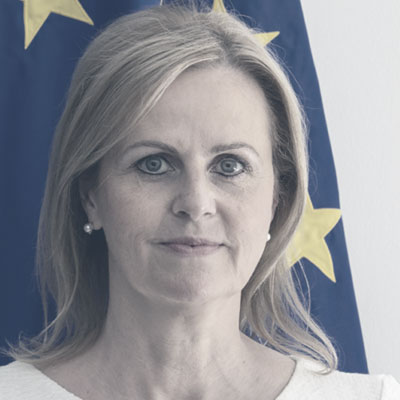 Florika Fink-Hooijer
Florika Fink-Hooijer Antoine Oger
Antoine Oger Laura Curtis-Moss
Laura Curtis-Moss Anthony Costello
Anthony Costello Anja Murray
Anja Murray Niall Ó Donnchú
Niall Ó Donnchú Mike Savage
Mike Savage Brian Carroll
Brian Carroll Claire Downey
Claire Downey Oisín Coghlan
Oisín Coghlan Stephen Onakuse
Stephen Onakuse Kevin O’Sullivan
Kevin O’Sullivan Susan Hegarty
Susan Hegarty Hendrik W van der Kamp
Hendrik W van der Kamp Philip Nugent
Philip Nugent Adrian Smyth
Adrian Smyth  Ainhoa Gonzalez Del Campo
Ainhoa Gonzalez Del Campo  Geoff Dooley
Geoff Dooley  Clare Pillman
Clare Pillman  David Greenfield
David Greenfield Danielle Conaghan
Danielle Conaghan Peter McEvoy
Peter McEvoy Triona McGrath
Triona McGrath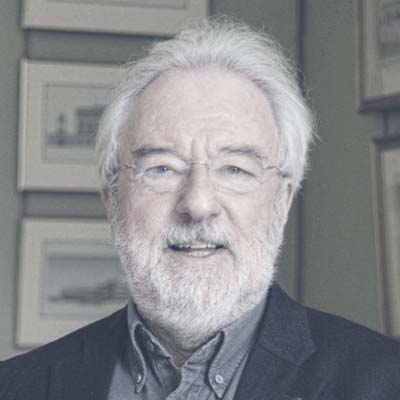 J Owen Lewis
J Owen Lewis Gavin Smith
Gavin Smith Imelda Hurley
Imelda Hurley Lucy Gaffney
Lucy Gaffney Dr Venkatesh Kannan
Dr Venkatesh Kannan Kevin Hegarty
Kevin Hegarty Eimear Cotter
Eimear Cotter Aditya Arora
Aditya Arora Patric Child
Patric Child Eleanor Roche
Eleanor Roche Andy Bleasdale
Andy Bleasdale Andrew Muir MLA
Andrew Muir MLA Chris Hewitt
Chris Hewitt Francesca Racioppi
Francesca Racioppi Christopher Hammond
Christopher Hammond Laura Díaz Anadón
Laura Díaz Anadón Lorna McAdoo
Lorna McAdoo Conor Murphy
Conor Murphy  Mark Horton
Mark Horton  Niall McLoughlin
Niall McLoughlin  Zoe Kavanagh
Zoe Kavanagh Niall Ó Donnchú
Niall Ó Donnchú Venkatesh Kannan
Venkatesh Kannan David McGee
David McGee Anna Rose
Anna Rose Paul Hogan
Paul Hogan








